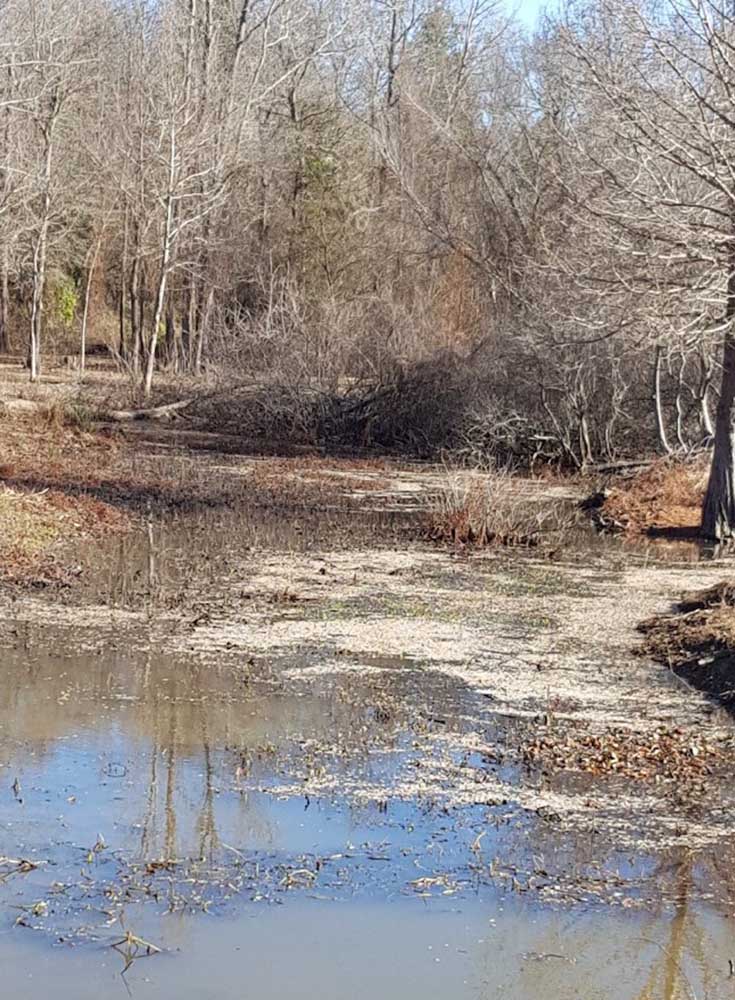Cold weather should slow salvinia, may not kill it
Published 3:54 pm Friday, February 9, 2018

- Giant salvinia has become an issue on Lake Fork and Lake Palestine. Biologists hope January’s cold weather will kill some of the vegetation and give spray crews a chance to get ahead of others this spring. (TPWD/Courtesy)
If ever there was a winter for fishermen in Northeast Texas to root for cold and more cold weather, this is it.
With giant salvinia showing up on both lakes Fork and Palestine last fall, the fishermen’s best hope for it to be controlled is for an extended blast of cold weather to do what chemicals and manual harvest could not — kill the stuff.
Trending
Going into 2018, there was about 5 acres of giant salvinia in the White Oak Creek area of Lake Fork. On Lake Palestine there was an estimated 25 to 30 acres total in Saline Bay and Kickapoo Creek.
While that does not seem like much in either case — based on growth estimates that the plant can double in mass every 10 days during the growing season — it could mean an expansion from 5 to as much as 160 acres on Lake Fork and from 30 to 480 acres on Lake Palestine just in the month of April.
Giant salvinia is a South American plant that is believed to have come to America for backyard ponds and fish tanks. It eventually found its way into public waterways, having been found first in South Carolina in 1996 and in Texas in 1998. It now exists in 12 mostly warmer climate states, including Hawaii.
The plant grows in floating mats that choke off light and oxygen below it, making it unsuitable as fish habitat. It is also impossible to boat through.
The worst-case scenario in Texas is Caddo Lake that has had as much as 6,000 acres of giant salvinia at one time. Caddo is especially susceptible to giant salvinia growth because the plant grows best in shallower water. During the growing season, TPWD has an ongoing spray program to kill the plant and utilizes a salvinia beetle that feeds on the plant.
After its discovery last fall on Fork and Palestine, TPWD manually harvested as many plants as they could and then undertook a spray program. In both cases there was concern that not all of it was killed. With both being deeper lakes, salvinia would not become the problem it is on Caddo, but like on Rayburn and Toledo Bend it could create backwater areas that are not accessible.
Trending
Then came January and almost a week of temperatures below freezing, including several days in the teens. At initial glance, it looks like the cold got what plants were left behind.
“I talked with John Findeisen (TPWD’s Brookeland Aquatic Invasive Species team lead) and he said they had visited Lake Fork and the cold weather had pretty much scorched the salvinia severely. He said they are planning to come back in a couple of weeks to reassess the salvinia and the water hyacinth,” said Kevin Storey, TPWD Inland Fisheries district biologist over Fork.
The story is similar for Lake Palestine following similar assessment, said Richard Ott, district biologist for the lake.
“The Aquatic Habitat Enhancement team came to Lake Palestine to do a salvinia treatment, but left without spraying a drop. All the plants they saw at that time were cold burned. However, it is way too early to speculate about eradication. The cold winter of 2014-15 did a number on the salvinia at Caddo, but most definitely did not eradicate it and by the following summer it was back. What the winter likely did for us is to buy some time for the team to catch up,” Ott said.
Findeisen explained that while the January weather in Northeast Texas was cold, it was not near what is needed to kill salvinia.
“According to some of the literature, a complete kill occurred when air temps reached approximately 3 degrees Fahrenheit for 48 hours,” the biologist said. “However, only a partial kill occurred when air temps reached approximately 26 degrees Fahrenheit for 48 hours. It was concluded that ice formation surrounding the plant as well as inside the plant cells was the cause of death. Temperatures reached approximately 14 degrees Fahrenheit during the January cold weather event and remained below freezing for close to 48 hours. We’ll see what happens.”
Findeisen said cold winters in the past have not necessarily killed salvinia on Texas lakes as much as it just delayed its regrowth the following spring by a month or two. He expects similar results this year.
“The good news is much of the plant has been damaged and regrowth will be delayed, but the cold weather did not kill it completely out as best we can tell,” Findeisen explained.
While the department continues to watch Fork and Palestine, 30 acres of giant salvinia has been discovered on Lake Nacogdoches at Yellow Bank Creek and Little Bayou Loco where it enters the reservoir.
Findeisen said the department will use salvinia beetles and treat individual plants because of the existence of preferred vegetation in the two locations.



